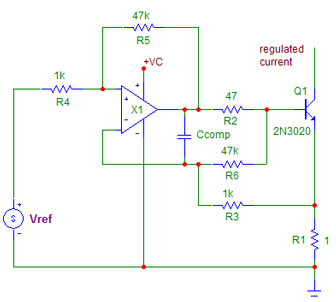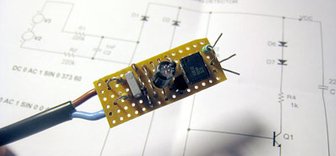Design Ideas
Background
Here is a small collection of design ideas and circuits I have developed for both serious and commercial use. All circuits are proven in real commercial products. I publish them here since I believe they might be of relevance and could simplify some of your projects too.
Some of the ideas might have been published in magazines, or on other persons' web pages (with permission).
This collection is not complete and will be updated from time to time.
ENJOY!
IMPORTANT DISCLAIMER
The circuits presented here are designed by me - unless otherwise specified. I reserve the right to the information presented here. I am not knowingly violating any copyrights or patents, nor deliberately offending other people by presenting pictures, schematics, ideas and/or other material as my own.
The information presented may not be used commercially, published, copied, transferred or distributed in any way, without a written permission from the author. You are allowed to use the information presented here as the basis for your own, private non-commercial construction projects.
Base Current Error Compensation in Current Sources
You can improve a bipolar transistor current sink’s (or source's) accuracy by at least two orders of magnitude by adding two standard 1% tolerance resistors to an already simple circuit.
As a bonus, you compensate for the error that a low current gain pass transistor’s base current introduces. To do so, you measure the transistor’s base current and add a proportionally scaled error term to the source’s reference voltage.
This idea can easily be extended to other applications, as current shunt measurement circuits and alike.
Isolated High-Quality Mains Voltage Zero Crossing Detector
This circuit produces constant and well-defined zero-crossing pulses, symmetrically centered around the mains zero crossings, using very little power and just a few plain vanilla components. The pulse length is virtually independent of the mains voltage, is stable with temperature, and immune against component and optocoupler tolerance and aging.
Low parts count bridge sensor interface
You can do without the typical differential amplifier consisting of three opamps and matched resistors - when interfacing to Wheatstone-type strain-gauge, pressure or force sensors.
Only one dual opamp is required - and as a bonus - the sensor is also driven by the same circuit. This design idea saves lots of components and space, especially in multichannel circuits.
You can simply set the gain and offset with two non-interacting resistors, and no matching or trimming is required to minimize the common-mode rejection.
Control three loads with two wires
This Design Idea is suitable for applications where power is applied to only one of the three remote DC loads at a time, and where the available wiring or number of connector pins is limited.
Three remote loads can be independently controlled by just using 3 wires and 2 switches. The loads can be of any kind as long as they are DC-driven and switched at relatively low frequencies (<100Hz). Best suitable for low voltage loads <40VDC.
Tally Information Return Link Over SDI-Cables
A 75-ohm SDI BNC cable is normally used for the one-way transfer of digital uncompressed video (and multichannel audio) - from video cameras to your video switcher. This idea shows how you can transfer (both preview and program) tally information back to the camera - using the same single SDI cable. You don't need any extra cabling or battery-driven wireless tally systems.
Self-locking optical signal receiver and detector
Under construction
Simple power switch
Under construction
Current transmitter for 4...20mA loops
The old and faithful TL431 shunt regulator is a very versatile component. In this circuit idea, TL431 forms together with a +3.3V or +5V voltage regulator a simple and good quality current loop transmitter.
"Double Bootstrap" push-pull design ensures full swing
Under construction
Mains voltage driven moisture detector
Under construction



